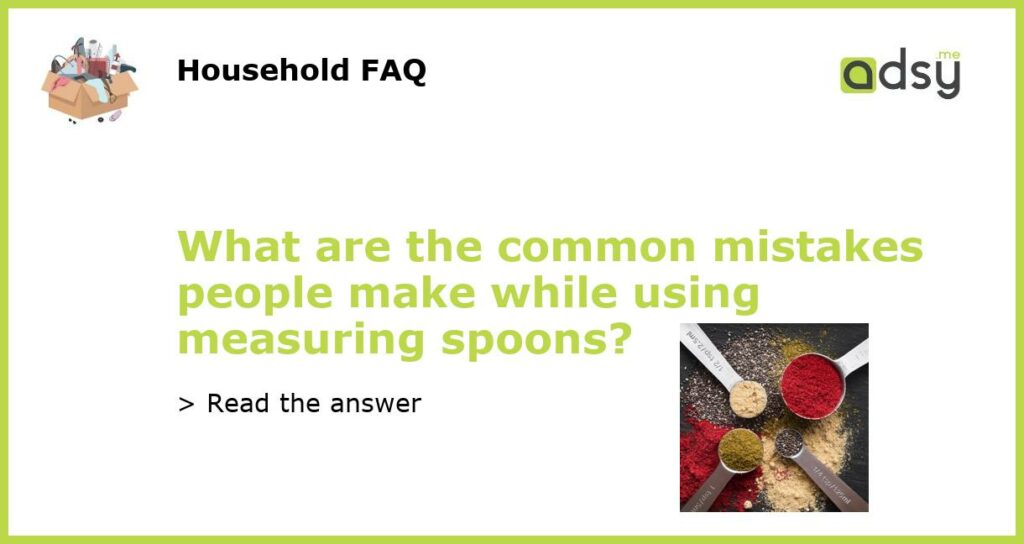Using Measuring Spoons: Common Mistakes and How to Avoid Them
Measuring spoons are a handy tool in the kitchen for ensuring accurate amounts of ingredients in recipes. However, many people make common mistakes while using them, which can lead to inaccurate measurements and disappointing results. In this article, we will explore these mistakes and provide tips on how to avoid them.
Mistake 1: Inaccurate Placement
One common mistake people make while using measuring spoons is not placing them correctly in the ingredient they are measuring. For example, when measuring flour, people often scoop the spoon directly into the flour bag, which can pack the flour down and alter the measurement. To avoid this, use a separate container to scoop the flour into and then level it off with a knife or spatula before adding it to the recipe.
Mistake 2: Using the Wrong Spoon
Another mistake is using the wrong measuring spoon size for the ingredient. For example, using a tablespoon instead of a teaspoon can lead to too much of an ingredient, which can alter the taste and texture of the final product. Make sure to read the recipe carefully and use the correct type and size of measuring spoon.
Mistake 3: Overfilling the Spoon
Overfilling the spoon is another common mistake people make. When measuring liquids, it’s important to fill the spoon to the brim but not overfill it, as this can lead to inaccurate measurements. For dry ingredients, make sure to level off the spoon with a knife to ensure the correct amount.
Mistake 4: Not Cleaning the Spoons
Using dirty measuring spoons can also lead to inaccurate measurements and affect the taste of the final product. Make sure to clean the spoons thoroughly after each use and dry them well before storing them. Avoid using abrasive materials to clean them, as this can damage the spoons and affect their accuracy.
Mistake 5: Not Calibrating the Spoons
Finally, not calibrating the measuring spoons can also lead to inaccurate measurements. Over time, the spoons can become bent or warped, which can alter their accuracy. Make sure to check the spoons regularly and replace any that are damaged or no longer accurate.
In conclusion, using measuring spoons correctly is essential for accurate measurements and delicious results. By avoiding these common mistakes and following our tips, you can ensure your recipes turn out perfectly every time.






